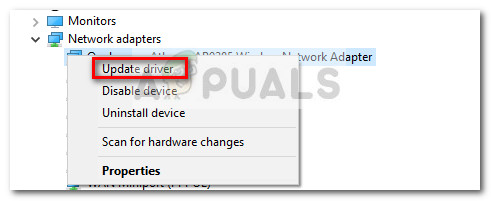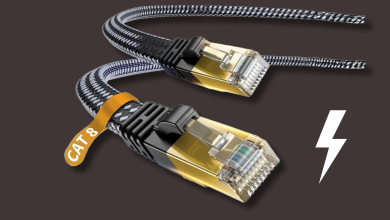Fix: Incorrect Psk Provided for Network Ssid
The “incorrect psk provided for network ssid” error is encountered when the user tries to connect to a home or work router. This regularly happens after the password of the router is reset and the PSK (pre-shared key) is changed. The message is essentially signaling that the user has entered the wrong password. However, there a quite a few of situation where the “incorrect psk provided for network ssid” error will be displayed even if the provided password is correct.
Whenever you connect to a new wireless network, Windows will automatically create a new profile for the wireless network. This profile is responsible for holding the network name (SSID) the password key (PSK) and other security information necessary for connecting to the wireless network. However, there are situations where this automatic process will fail and create connection problems such as the “incorrect psk provided for network ssid” error.
If you are currently struggling with the “incorrect psk provided for network ssid” error when trying to connect to a wireless network, we have some fixes for you. Below you have a collection of methods that other users have used to resolve the issue and connect properly. Please follow each of the potential fixes below in order until you find a method that resolves the issue on your particular situation. Let’s begin!
Note: Before you start going through the fixes below, please make sure that you are using the correct password.
Method 1: Install the latest driver software for your router
As some users have pointed out, this issue can occur if your router is using the default Windows adapter. This is known to create problems with some router manufacturers (especially with TP models).
What might happen is, the default Windows adapter tricks the router into treating WPA2 (Wi-FI Protected Access II) protected network as if they were using WEP (Wired Equivalent Privacy) encryption instead (or vice-versa). Whenever this occurs, the authentication will fail with even if the user has inputted the right password.
The solution for this particular issue is to download an install the dedicated driver manually in order to force your router to recognize the encryption mechanism properly. To do this, head over to your router manufacturer website and download the latest available driver for your particular model manually.
Additionally, you can get your computer online using a different route (via hotspot or wireless adapter) and use Windows Update to install the latest driver for your router. Here’s a quick guide on how to do this:
- Make sure your computer is connected to the internet.
- Press Windows key + R to open up a Run box. Then, type “devmgmt.msc” and hit Enter to open Device Management.

- In Device Management, expand the Network adapters drop-down menu. Then, right-click on your network adapter driver and choose Update driver.

- In the next screen, click on Search automatically for updated driver software and wait for the investigation to complete. If a new driver version is found, follow the on-screen prompts to install it on your computer.
- Reboot your computer to complete the installation and see if the issue has been resolved at the next startup.
If you’re still encountering the same issue or you already had the latest network adapter driver installed, continue down to Method 2.
Method 2: Connect to Wireless Network using the Network and Sharing Center
One of the most common ways that other affected users have managed to deal with the issue is to create the wireless network connection manually. There are multiple ways that you can do this, but let’s start with the most intuitive approach. You can create a new wireless network manually from the Network and Sharing Center. The following guide is confirmed to work for Windows 7, Windows 8 and Windows 10.
Here’s a quick guide on how to connect to a wireless network using the Network and Sharing Center:
- Press Windows key + R to open up a new Run box. Then, type “control” and hit Enter to open Control Panel.

- Inside Control Panel, go to Network and Internet and then click on Network and Sharing Center.
- Inside the Network and Sharing Center window, click on Set up a new connection or network.

- Next, click on Manually connect to a wireless network, then click the Next button.

- Next, enter the information for the wireless network that you want to add. Make sure to enter the same network name that you have in the Network name box. Then, set the Security Type to WPA2-personal and the Encryption type to AES. Under Security key, enter the correct password that you are currently using for other devices and make sure you type it right.

Note: Keep in mind that your router might be using different Security type and Encryption type settings. - Then, tick the boxes associated with Start this connection automatically and Connect even if the network is not broadcasting and hit the Next button.
- If a network with the same name already exists, click on Use the existing network to complete the process of creating a new wireless network manually.
- Finally, go to your wireless pane, enter your network name and password and see if you are able to connect successfully.
If the connection is still interrupted by the “incorrect psk provided for network ssid” error, continue down with the next method below.
Method 3: Connecting to Existing Wireless Network Profile using an Elevated Command prompt
If you have previously created a new wireless network connection manually but you can’t seem to connect to it, it’s worth a try to try your luck from an elevated Command Prompt.
Some users have reported that this method was successful when the conventional connecting method has failed. Here’s a quick guide on how to connect to an existing wireless network profile using an Elevated Command Prompt:
- Open a new Run box by pressing Windows key + R. Then, type “cmd” and press Ctrl + Shift + Enter to open up an elevated Command Prompt. Then, choose Yes at the UAC (User Account Control) prompt.

- In the elevated Command prompt, type the following command to get a list of all wireless network profiles:
netsh wlan show profiles
- Locate the profile that you want to connect to and type to the following command followed by the Enter key to connect to it:
netsh wlan connect name= "Name of network profile"Note: Keep in mind that “Name of network profile” is merely a placeholder. Please replace it with the actual name obtained at step 2.
- See if you are able to connect successfully. Once the connection is succesfull, you can safely close the elevated Command Prompt.





